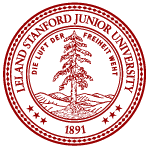Course Requirements (Email gene210.stanford@gmail.com)
Problem Sets (20%)
Problem set 1. Out April 2. Due April 16.
Problem set 2. Out April 16. Due April 30.Projects (40%)
Choose one of the following projects.
1. Genotation Write-up
Create a page on a new topic for genotation. It should include introductory text and a look-up table for other students to use. Consult Stuart with your idea for a new genotation topic.2. SNPedia Write-up
a. One page write up of association of how a SNP is linked with a particular trait. The format is the same as used at SNPedia.com. For example, see http://www.snpedia.com/index.php/Rs1800497. This should be a new SNP, not currently listed at DTC companies or on SNPedia. (Previous traits can be written with permission from Stuart Kim and your write up has to be significantly different than ones available on the web. )
b. First draft due on May 14, 2015. Instructors and TAs will provide comments on your write-up.
c. Write-ups will be published on SNPedia.com by the last day of class, May 21, 2015.3. Special Project
In the past, some students have found a specific interest in some aspect of Personalized Medicine. This may come from your interest in some aspect of your own genetics, the ethics of genetic testing, or entrepreneurial possibilities in Personalized Medicine. You may come up with an individualized project for class credit by discussing your idea with one of the course directors. Past examples include:
Final Exam (40% credit) take home.
Super-projects
In the past, some students have taken this introductory class even though they are highly advanced in human genetics and bioinformatics. These students can do a more advanced project by consulting one of the course instructors. Students that undertake a super-project do not need to take the final exam. Examples of past super-projects:
a. Annotate genotypes of entire family. Determine recombination breakpoints in all children.
b. Write a program to calculate best genetic mate between one student and all other students of the opposite sex.
c. A 5 page proposal was submitted to the Research Program for Genes, Environment and Health. One student working on schizophrenia for her PhD thesis wrote a proposal to RPGEH to request genotype/phenotype data from 110,000 patients of Kaiser Permanente in San Francisco. The goal was to perform a large GWAS on schizophrenia.
d. One student wrote a manuscript for the New England Journal of Medicine about his experience from what he learned from genetic testing.
